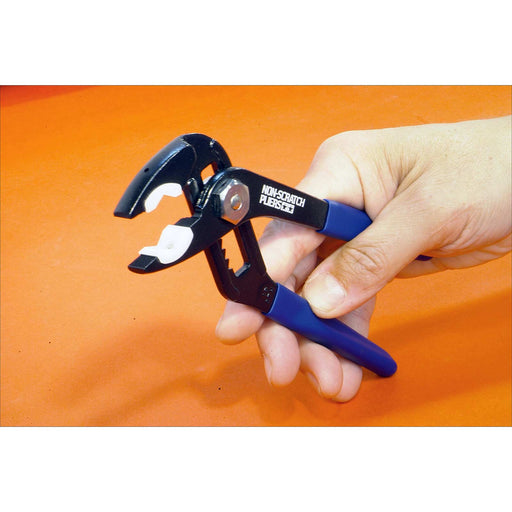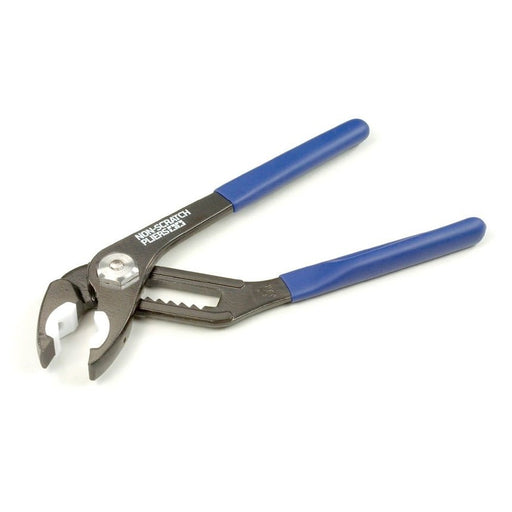Micro-Mark Depot Buff Paint, 20ml

- Muted tan-yellow color inspired by historic railroad depots and equipment
- Ideal for wooden structures, platform trim, and faded industrial siding
- Pairs well with Caboose Red, Engine Black, and Reefer Gray for vintage palettes
- Matte finish ideal for weathered architecture, MOW gear, and trackside scenes
- Made in the USA
Description
Depot Buff is a soft, subdued yellow-beige tone designed to replicate the sun-faded paints used on early 20th-century railroad depots, freight offices, and maintenance-of-way equipment. It evokes the worn appearance of painted wood left exposed to decades of sunlight, dust, and coal smoke. Perfect for vintage buildings and utility cars, Depot Buff provides an authentic weathered base that looks naturally aged—especially when drybrushed or lightly washed.
Depot Buff is included in the following sets:
Item #29384 Railroad Model Color Paint Set
Item #29433 Basic Acrylic Painting Set with Brushes, Mediums & Empty Bottles, 89-Piece
Color Description
This medium buff tone has hints of ochre and gray, reflecting the natural patina of painted wood and early utility structures. It strikes a balance between yellow and tan, making it suitable for trim, walls, signage backgrounds, and equipment bases. Use it as a highlight over Box Car Red or to create contrast with darker tones like Engine Black or Tarnished Black.
The History of “Depot Buff” in Railroading
In the late 1800s and early 1900s, railroad depots and outbuildings were commonly painted in earth-tone colors—chosen for their durability, visibility, and ability to hide dirt. Buff colors, in particular, were used for:
- Station walls and trim
- Baggage room doors and platforms
- Tool sheds and rail-side utility boxes
Many railroads, including the Santa Fe, Southern Pacific, and Union Pacific, used buff or tan shades to complement red-brown and black trim schemes. These paints were often oil-based and prone to fading, creating the desaturated look that Depot Buff replicates.
Modeling Use Cases
• Railroad depots, station platforms, and crossing shacks
• Freight office walls, doors, and staircases
• Trackside utility structures, signal towers, and sheds
• MOW rolling stock: tool cars, bunk cars, small cranes (see below for MOW)
• Weathered highlights on boxcars or wood paneling
Tip
Apply over a light gray or white primer for full warmth. For weathering, use a sepia wash or light sponge chipping with Caboose Red to simulate peeling paint. For sun-faded effects, drybrush with Reefer White or Cream.
MOW rolling stock refers to Maintenance-of-Way rolling stock—rail vehicles and equipment specifically used to maintain, repair, and support railroad infrastructure.
What Does MOW Stand For?
- MOW = Maintenance of Way
- “Way” refers to the track, roadbed, ballast, bridges, signals, and surrounding infrastructure that make up a railroad’s right-of-way.
What Is MOW Rolling Stock?
These are non-revenue railcars and specialized vehicles that don't carry freight or passengers but instead perform crucial work behind the scenes. MOW rolling stock is essential for keeping the railroad operational, safe, and efficient.
Common Types of MOW Rolling Stock
| Type | Purpose |
| Tool Cars | Carry tools, spare parts, and gear for track repair |
| Bunk Cars | Provide sleeping quarters for mobile work crews |
| Crane Cars | Used for lifting rails, equipment, or derailed cars |
| Ballast Hoppers | Distribute and spread crushed stone under the tracks |
| Flatcars with Equipment | Carry backhoes, graders, or other track machines |
| Flangers & Plows | Clear snow and debris from the tracks |
| Ditcher Cars | Dig drainage ditches alongside the tracks |
| Water or Fuel Cars | Supply fuel, water, or oil for remote operations |
Why It Matters for Modeling
- MOW rolling stock often features distinctive colors like Depot Buff, Grimy Black, Orange, or Olive, depending on railroad and era.
- Cars were often patched, mismatched, or heavily weathered, offering great opportunities for realistic detailing.
- Including MOW trains in a layout adds depth and operational variety, especially during off-peak hours or staged work zones.










